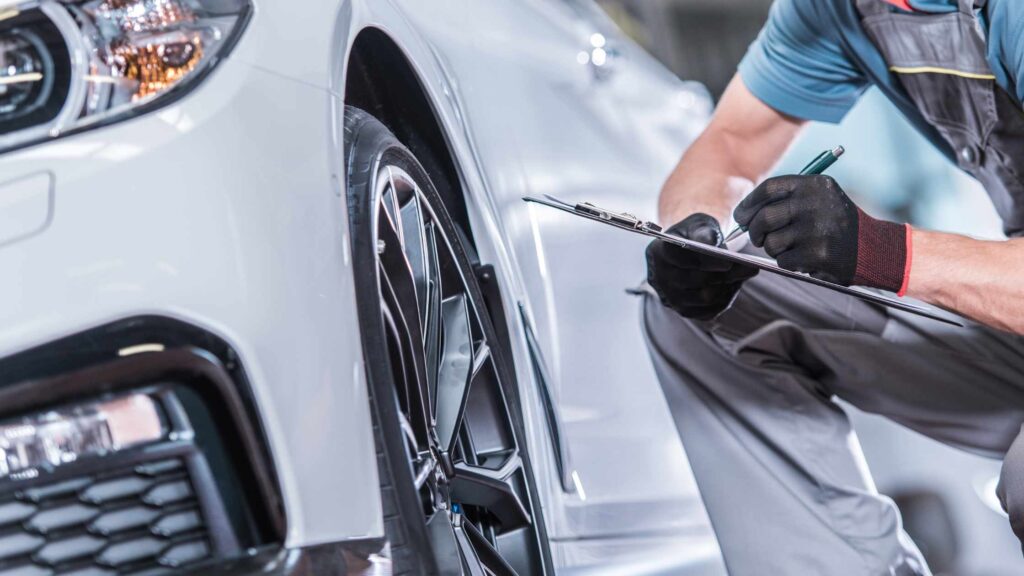Introduction
When it comes to buying a used car, it’s essential to be vigilant and perform a thorough inspection before making a purchase. Often, sellers may not disclose every detail about a vehicle’s condition, and you don’t want to end up with a lemon. By conducting a DIY car inspection, you can spot red flags and ensure you’re making a sound investment.
Start with the Exterior
The first step in your DIY car inspection is to inspect the exterior of the vehicle. Begin by examining the body for any signs of rust, dents, or scratches. While some wear and tear are expected, excessive damage could indicate poor maintenance or previous accidents. Pay attention to uneven paint or panels, as this might suggest a potential cover-up.
Next, inspect the tires. Look for even wear, proper inflation, and adequate tread depth. Uneven tire wear could be a sign of suspension or alignment issues. Don’t forget to check for any signs of damage to the wheels, such as bends or cracks.
Moving on to the Interior
Once you’re satisfied with the exterior, it’s time to inspect the interior. Start by checking the condition of the seats, dashboard, and other surfaces for any signs of significant wear or damage. Pay particular attention to the driver’s seat as it tends to endure the most use.
Ensure that all the seats are adjustable and functioning correctly, and don’t forget to check the seat belts. Pull each one out and check for fraying or signs of wear. Faulty seat belts can compromise safety and be costly to repair.
Lights, Gauges, and Controls
Now, let’s move on to the vehicle’s lights, gauges, and controls. Turn on the headlights, taillights, brake lights, and indicators to ensure they are all working correctly. While inside the car, check the instrument panel gauges and warning lights. Make sure they all illuminate and go off during startup.
Test all the controls such as the windows, locks, mirrors, and windshield wipers to verify that they are in good working order. Malfunctioning controls may indicate electrical problems, so it’s crucial to catch these issues before making a purchase.
Engine Checks
One of the most critical aspects of a car inspection is evaluating the engine. Start by popping the hood and examining the engine compartment. Look for any signs of leaks or corrosion around hoses, belts, and connectors. Check the oil level and look for any milky or sludgy residue, which may indicate a coolant leak or poor engine maintenance.
Inspect the battery for any signs of corrosion or damage. Ensure that it’s securely mounted and that the terminals are clean. A weak or unreliable battery can cause starting issues and may need to be replaced sooner rather than later.
Fluid Levels and Quality
In addition to checking the oil, it’s essential to inspect the other fluid levels as well. Check the transmission fluid, brake fluid, coolant, and power steering fluid. The fluids should be at the appropriate levels and appear clean and clear. Dirty or low fluid levels could indicate neglect or potential issues with the vehicle’s systems.
Undercarriage Examination
To complete your DIY car inspection, it’s essential to inspect the undercarriage of the vehicle. Look for any signs of excessive rust or damage to the frame, exhaust system, or suspension components. Pay attention to any leaks, as this could be an indication of a significant issue, such as a faulty transmission or engine.
Take it for a Test Drive
Before finalizing your decision, it’s critical to take the car for a test drive. Pay attention to any unusual noises, vibrations, or steering issues. Test the brakes to ensure they are responsive and don’t exhibit any signs of abnormal behavior.
During the test drive, try different speeds and road conditions to get a good sense of how the car performs. If possible, find a parking lot and test the turning radius as well. Any issues that arise during the test drive should be red flags and may require further investigation or negotiation on the price.
Summary
Performing a DIY car inspection can help you spot potential red flags before purchasing a used vehicle. By thoroughly inspecting the exterior, interior, engine, fluids, and undercarriage, you can avoid costly surprises down the line. Remember to take the car for a test drive to assess its performance and handling. With these tips in mind, you can make an informed decision and ensure that the car you choose meets your needs and expectations.







